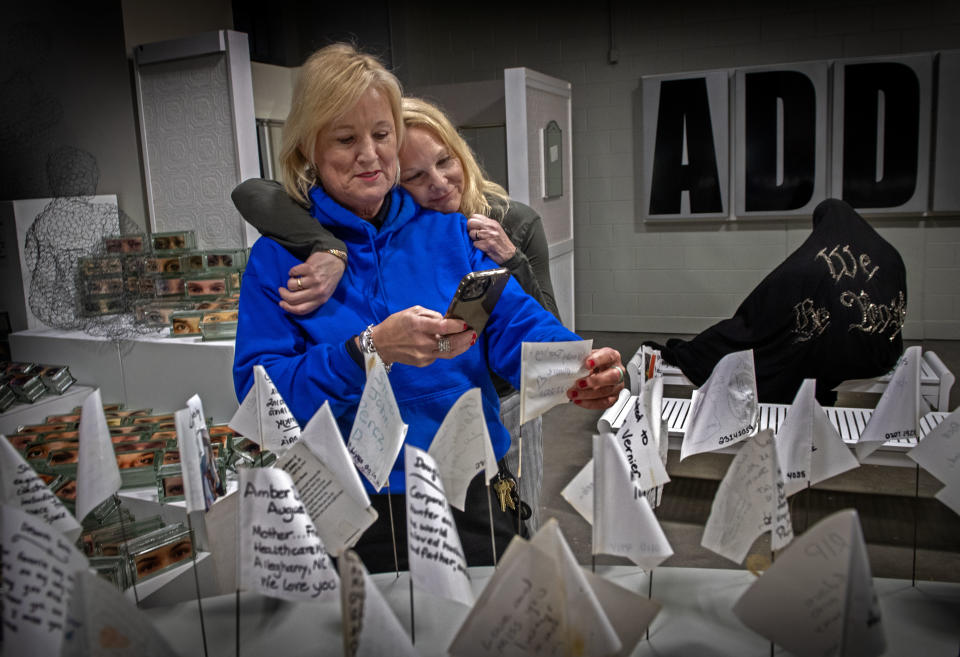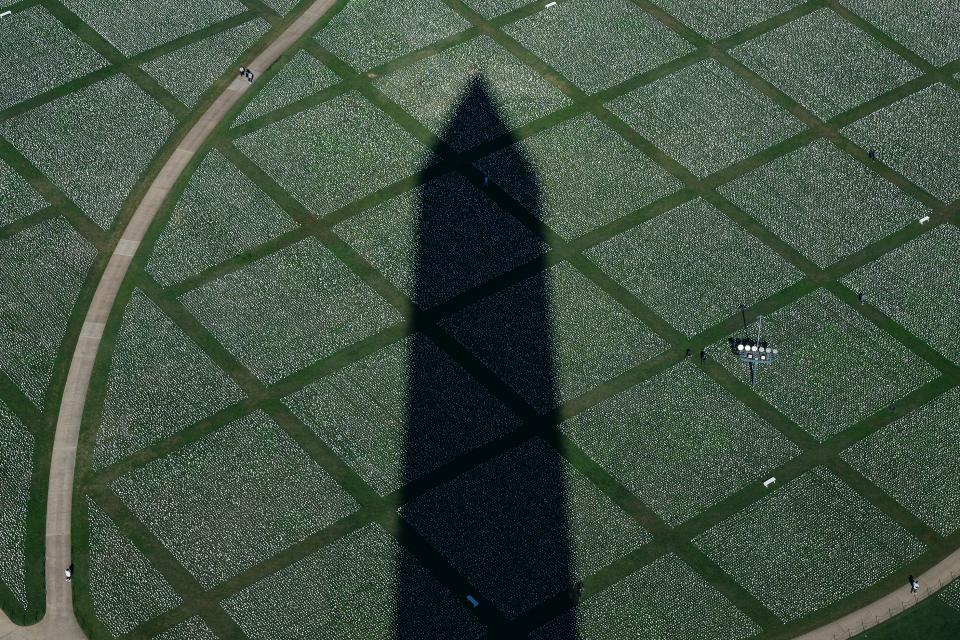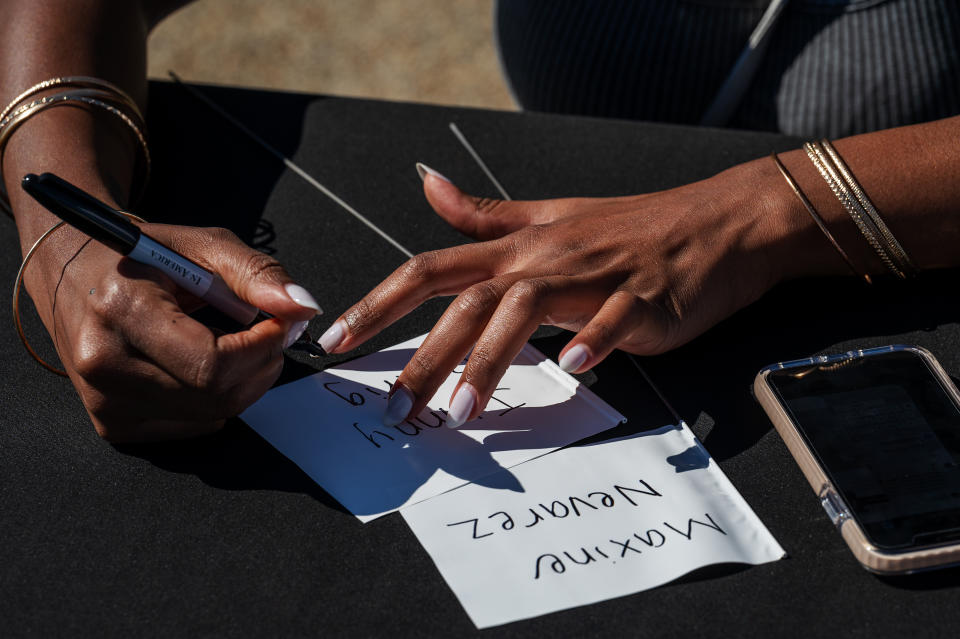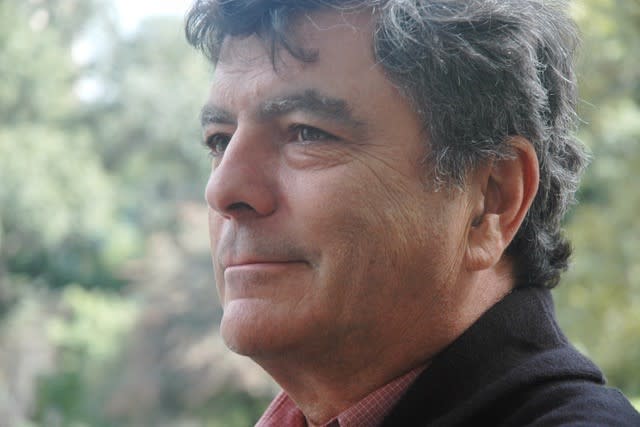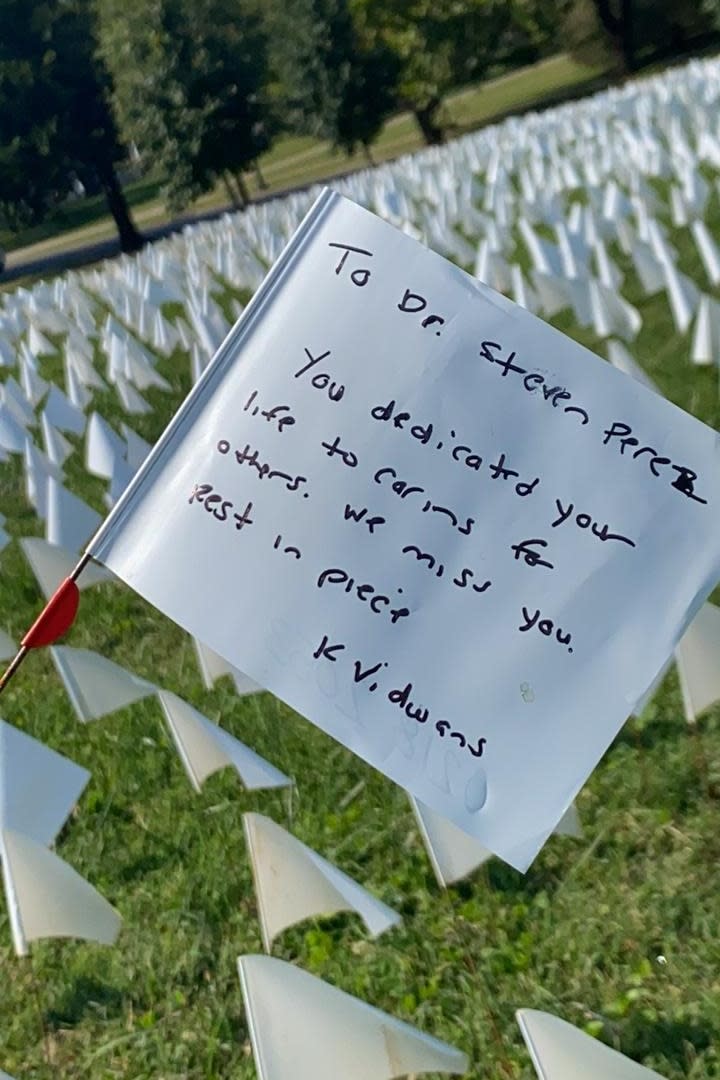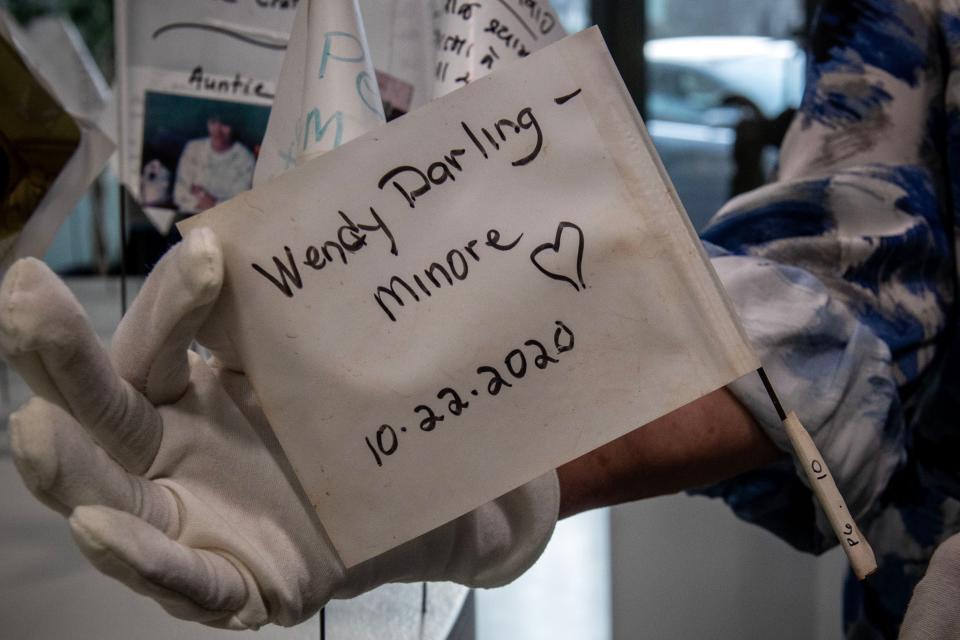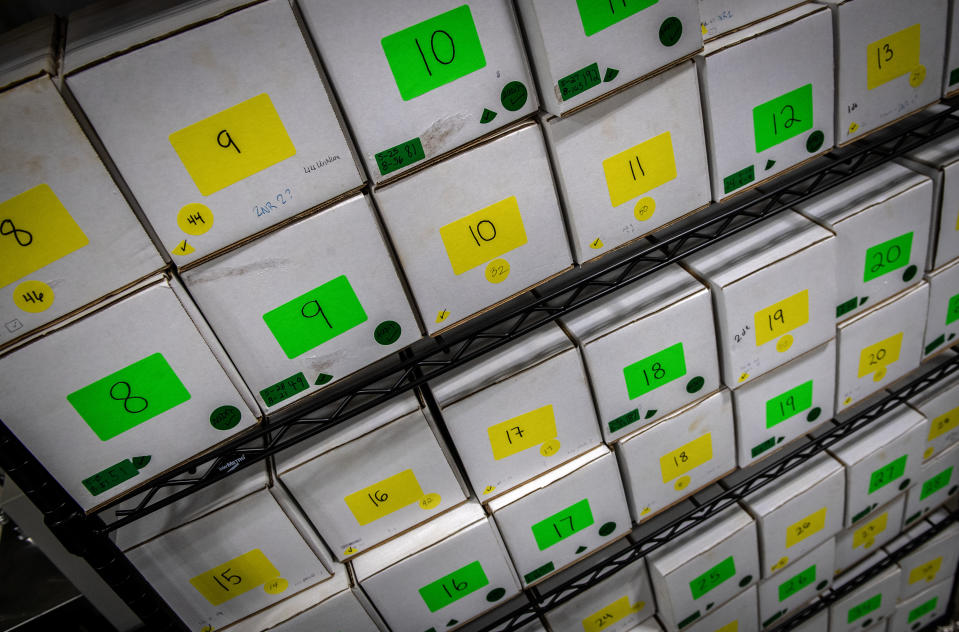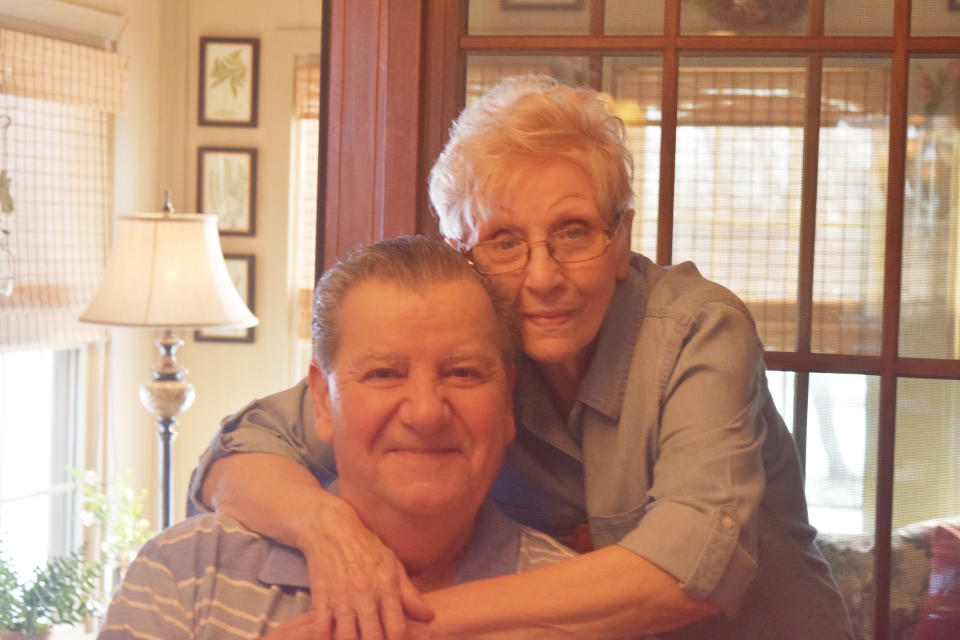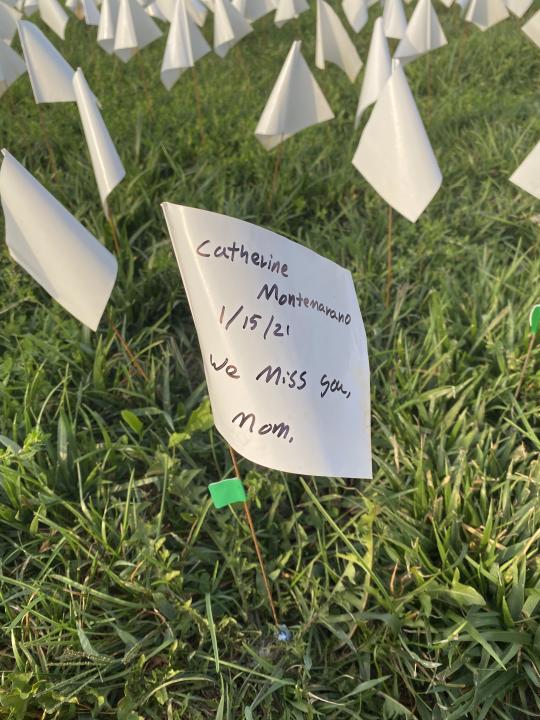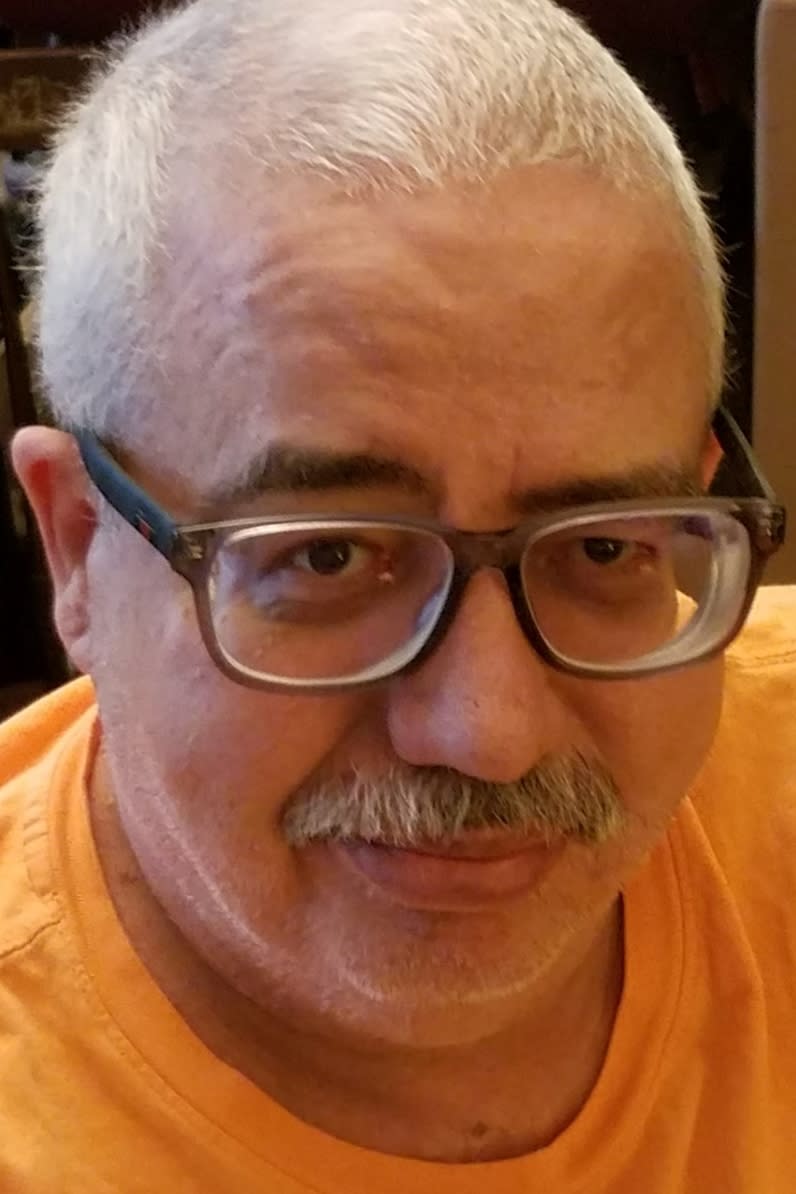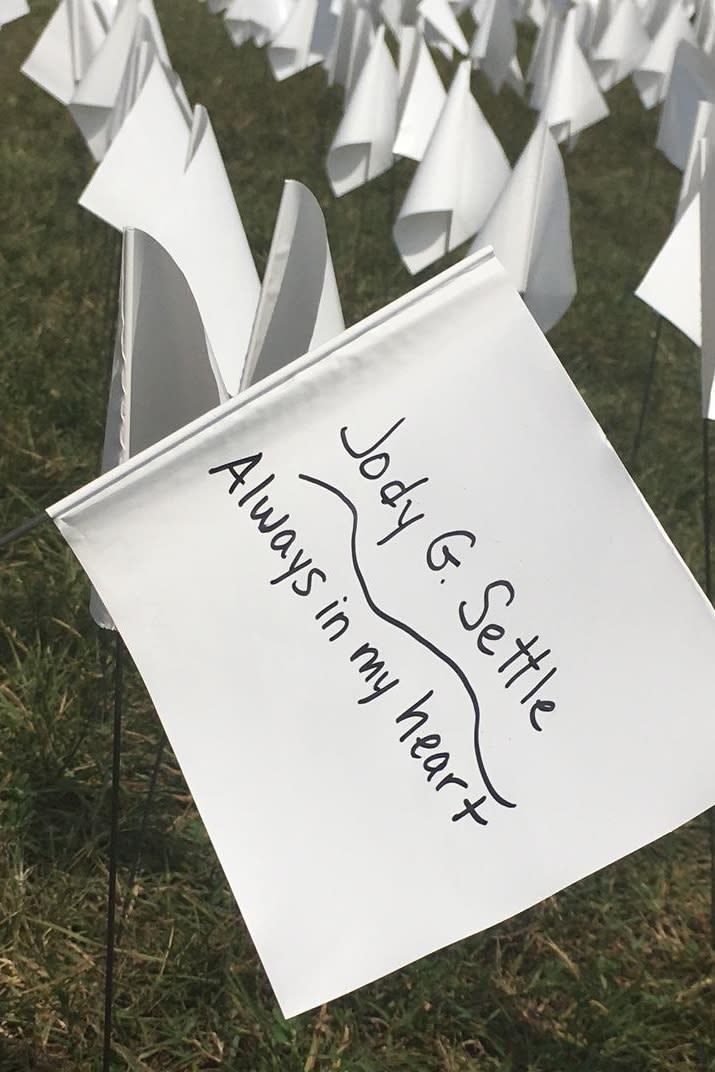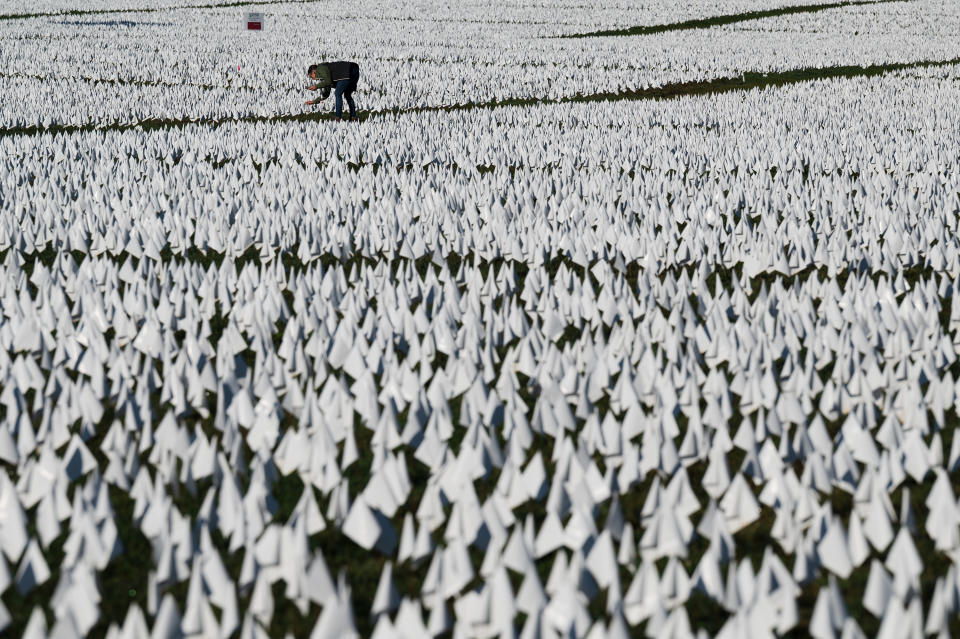Four years in, covid flags no longer fly. Families’ grief remains.
The monument to grief on the National Mall was never built to last.
The sea of white flags, one for each covid victim, rustled in the wind and shimmered in the sunlight for a time, simply asking passersby to consider those who died too soon:
“Dante Montreal. He liked turtles.”
“Will I ever stop thinking, ‘I want my mommy?’”
“Warner Lee Timmons. Beloved husband, father and grandfather who served his country but died unnecessarily when his country let him down.”
The ink on some tributes has faded, but the messages endure.
The urgency of remembering has only deepened for survivors as America moves further from the World Health Organization’s declaration of a coronavirus pandemic, four years ago this month.
To artist and former hospice volunteer Suzanne Brennan Firstenberg, who is archiving 20,000 flags from the memorial with anthropology professor Sarah E. Wagner, the nation’s reckoning with loss is just beginning. Nearly 1.2 million people in America have perished, federal data shows.
“We’re running from a burning building. We’re not ready to stop and look back at the largest slow-motion casualty event in U.S. history,” Firstenberg said.
The flags were installed outside RFK Stadium in Washington from late October through November 2020 and on the Mall from Sept. 17 to Oct. 3 in 2021. The Washington Post talked to some of the people who dedicated flags about what the memorial, “In America: Remember,” meant to them.
- - -
The doctor’s widow
Margie Eyman Perez had to do something with her grief, so she volunteered to help others with theirs.
She was on the Mall when she met the couple who wanted to dedicate a flag to their doctor - a man known for his sense of humor and for taking his time with patients.
“What was his name?” she asked them.
“Steven John Perez,” they said.
“I’m Dr. Perez’s widow,” she said. They hugged.
Later, she would learn that two other families had dedicated flags to her husband, a former military physician to presidents Ronald Reagan and George H.W. Bush who went on to build a practice with 3,000 patients.
He was devoted to them, she recalled, continuing to see elderly patients in person as the virus began to rage. Then, on April 20, 2020, he came home sick, too.
Within days, he was on a ventilator, and then in a medically induced coma. By May 7, it was time.
She played Leonard Cohen’s “Hallelujah,” placed her gloved hand over his gloved hand and “watched the heartbeat on the machine just click down slowly,” she recalled.
She took the Metro home from George Washington University Hospital to Chantilly, Va., sobbing the whole way.
The National Institutes of Health autopsied his body to study the effects of covid. His ashes were interred at the National Memorial Cemetery at Quantico. At a drive-through funeral, family and friends spent two hours passing tents filled with some of his favorite things: a poster from the Nationals 2019 World Series win, golf clubs, a chair from the front porch where he loved to read.
Most of all, he put others first. So months later, when Margie Eyman Perez heard about the exhibit, she was all in - teaming up to replant thousands of flags from an earlier iteration of the installation even as a thunderstorm bore down.
“It was empowering. It wasn’t just my grief; it was a collective grief down there,” she said.
- - -
A sister grieves
Debbie Darling Norris, 65, took every pandemic precaution and followed every rule, finding comfort in what little she could control. Then, covid came for her sister.
Wendy Darling-Minore, 60, entered a Florida hospital in the fall of 2020 and never left.
Social distancing rules would delay a memorial service, leaving Norris, of Germantown, Md., to shoulder the loss alone. A memorial of flags at RFK Stadium in Washington gave her a ritual; “a place to put my grief,” she said.
She returned often and helped break down the site, bonding with other helpers who would jokingly ask each other, ‘What are you in for?’
When the exhibit moved to the Mall in September 2021, she transcribed digital messages onto flags with permanent marker for people who couldn’t be there.
The messages captured a range of emotions, from anger to bittersweet memories, Norris said.
“It’s an awful thing: not being able to grieve,” Norris said. “The wind and the way the flags fluttered -you could see the grief go.”
Without the peace she felt among the flags, Norris said, she might have fallen into despair.
She and several other volunteers involved in the exhibit expressed support in interviews for a permanent memorial, a quiet place to remember lives lost to the pandemic.
For many, the jumble of emotions was complicated by others’ distrust for public health institutions.
“It was really hard in those days not to judge people for their beliefs because we were all so confused in the beginning,” Norris said. “And some people are still confused.”
- - -
A son’s memoir
When Nicholas Montemarano’s parents were diagnosed with covid a few days before Christmas in 2020, he was more worried about his father, who had preexisting conditions.
The doctor gave Catherine Montemarano, 79, steroids and antibiotics and sent her home, but her fever rose and she was admitted to an Indiana hospital on New Year’s Eve.
But by Jan. 6, 2021, the doctor summoned the family. Nicholas Montemarano drove 600 miles from his home in Lancaster, Pa., worrying about his mother as the insurrection unfolded at the U.S. Capitol. For a while, her health seemed to improve, but soon doctors were recommending palliative care.
On Jan. 15, doctors allowed Montemarano and his twin sister, a nurse, to blanket themselves in personal protective equipment and be there for the final day of their mother’s life.
“I just cannot imagine how much harder it would have been and would still be if we were not able to be with her,” he said.
The family held a Mass with 10 people, including his wife and son. A legal secretary, a Catholic and devoted grandmother of three, Catherine Montemarano supported foster children around the world, writing them letters and sending photos.
Months later, he learned of the flags project from a virtual support group and registered one online, writing, “We miss you, mom.” and drove to D.C. with his family.
He began to cry as soon as he approached the installation and saw the death toll sign, and he didn’t stop until he found her flag.
“It was almost like I was visiting my mother’s grave,” he said. “It gave us tangible space and a place for collective mourning.”
They sat in the grass, taking in the one public place where he could shed tears without anyone wondering why. “They all knew,” he said.
Until his mother’s death, Montemarano, a creative writing professor at Franklin & Marshall College and novelist, wrote almost exclusively fiction. In less than a month, he found himself with a memoir.
He said writing the book, “If There Are Any Heavens,” published in July 2022, helped him to heal.
“For people who lost a loved one, we’re never going back to normal,” he said.
- - -
He lost his husband
Ed Koenig searched up one row and down the next, up and down, for hours. But on that warm, breezy day in September 2021, he couldn’t find the flag he had dedicated online to Jody Settle, his partner of 33 years.
“I had already lost him once. I can’t lose him again,” he recalled thinking, feeling his stress building about the pandemic and his looming train trip home to New York.
Settle died on April 19, 2020, after a 10-day bout with covid.
It started on Easter Sunday with a 102-degree fever, fatigue and a below-normal blood oxygen level, Koenig said. A medic warned them to avoid the emergency room, saying, “That’s a death sentence.”
Around-the-clock Tylenol and rest seemed to help until Settle woke up gasping for air. This time the medic said his lungs sounded like a kaleidoscope, “full of broken glass.”
As medics loaded Settle into the hospital-bound ambulance, he sat up and said, “I’ll see you in a couple days,” Koenig said.
A doctor said his husband probably wouldn’t make it through the night. He stayed up staring at the phone on the nightstand, willing it not to ring.
Settle’s condition improved and worsened several times before nurses moved him to an in-hospital hospice unit and said Koenig should come quick.
Dressed in head-to-toe protective gear, Koenig had 30 minutes with Settle, telling him, “You fought your whole life. Maybe now you can let go and relax, take it easy.” He died within the hour at age 58; Settle’s watch stopped the moment Koenig, 68, found out the news.
“The time that our life together ended,” he said.
They met at the 1987 New York City gay pride parade. Settle, who had multiple sclerosis, loved their beagle, Sugar, and Patsy Cline.
Through an online support group - the WTF Group, short for Widowers to Friends - Koenig learned about the flags, dedicated one online to Settle, “Always in my heart,” and quickly boarded a train to D.C.
Feeling like he was walking on “sacred ground,” he clocked that day’s death toll at 693,323 and searched for Settle’s flag until he returned, dejected, to the spot where he started.
He said aloud to Settle, “I tried, but I can’t find your flag,” Then a flag right in front of him unfurled.
“I just fell to my knees,” he said. “I said, ‘I know you’re watching over me.’”
- - -
The anthropologist
Wagner, an anthropology professor at George Washington University, spent the first year of the pandemic afraid.
She knew a coronavirus infection could prove fatal for her mother, who was in the late stages of Alzheimer’s.
She didn’t want her to go alone at a time when family members could not hold a hand or stroke a cheek - knowing some families were haunted by uncertainty as news reports featured mobile morgues on a doom loop.
She felt it all, working among the flags eight to 12 hours a day and immersed in the suffering of others as she taught classes and gathered research for a five-year study funded by the National Science Foundation.
Her research, called Rituals in the Making, examines this interruption in death customs and memorialization at a time when covid isolation made rituals such as caring for a sick relative, being at their bedside in the final moments of life and mourning together impossible.
The moral injury surfaces in messages on the flags. “I’m sorry you had to leave without your loved ones at your side,” read one inscription.
Often grief was complicated by misinformation or vaccine hesitancy, politicizing the mourning process, she said. Families also had to decide how to mourn - in small groups, virtually or whether to delay gathering until restrictions lifted.
“For a lot of families, that just didn’t give them that tactile sense and of being able to hold one another, to cry together, to have that meal afterwards … and linger over your memories of that loved one,” Wagner said.
She began working on the Mall about four months after her mother was vaccinated and moved to a memory care facility in Rockville.
“Some of them just were like a gut punch because I felt like I was so fortunate. There but for the grace of God, go I,” she said, welling up. “This still is so painful.”
Related Content
The Supreme Court seems bitterly divided. Two justices say otherwise.
Race is an ever present source of tension in Trump Georgia case
The Taliban once smashed TVs. Now it fosters YouTubers to promote its image.
